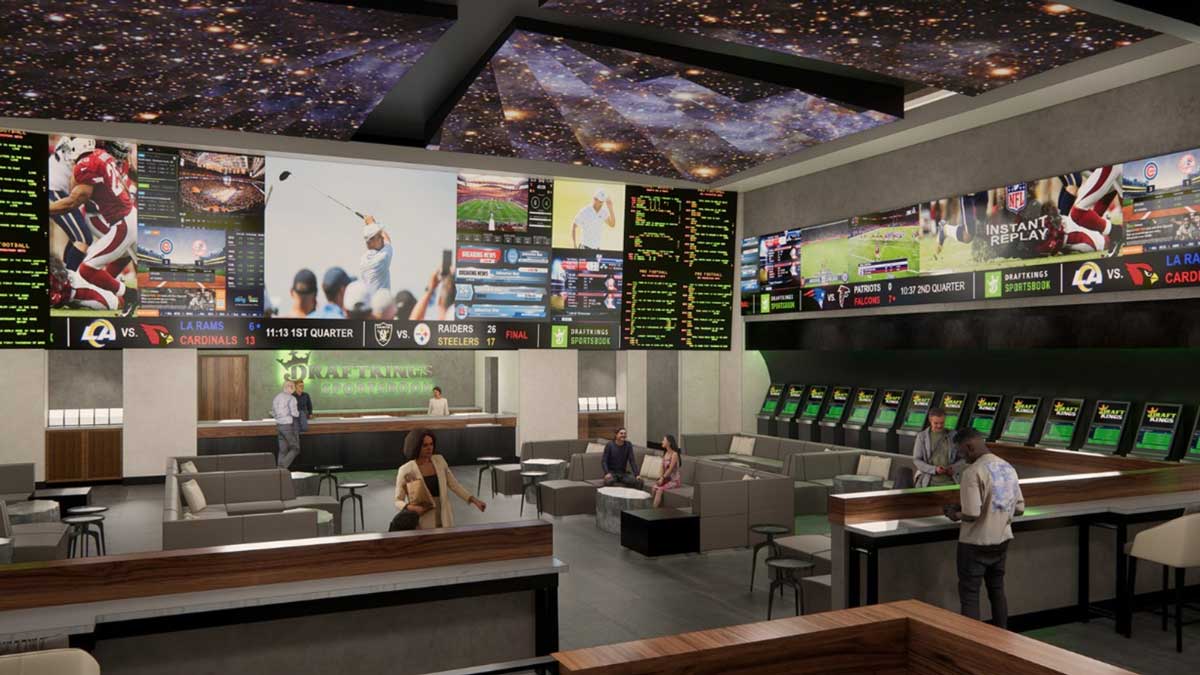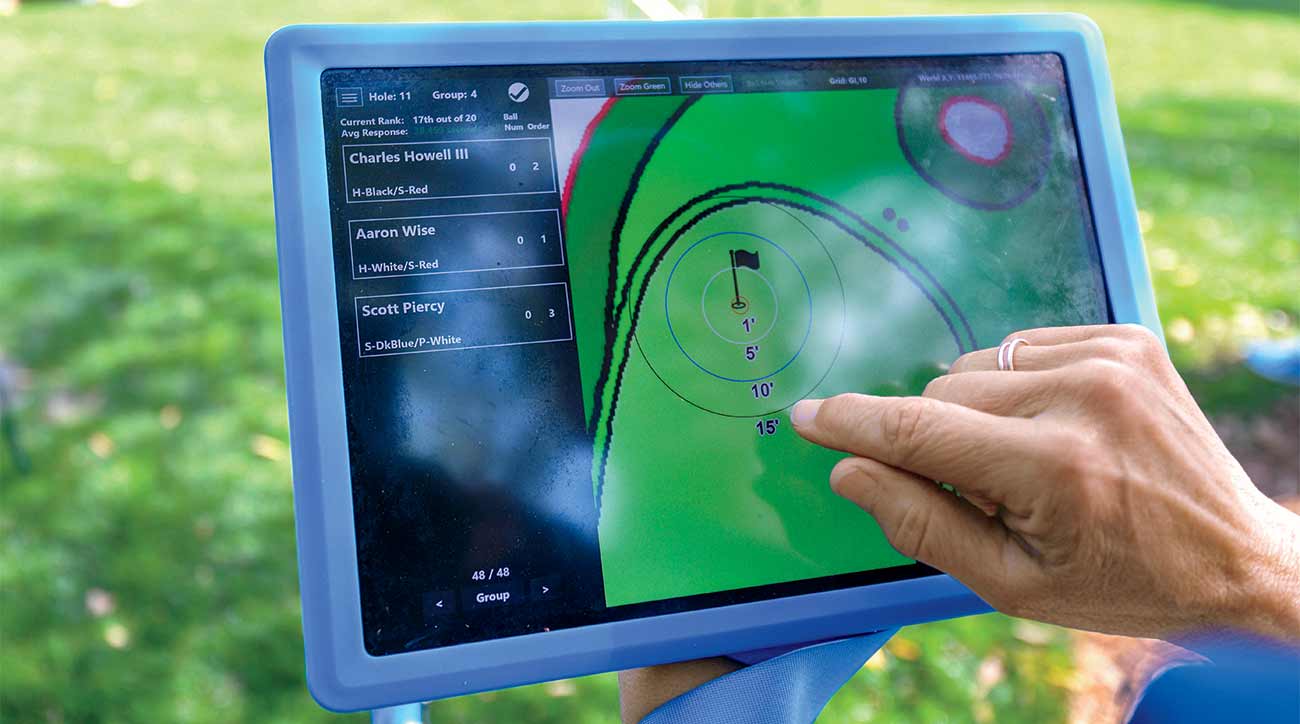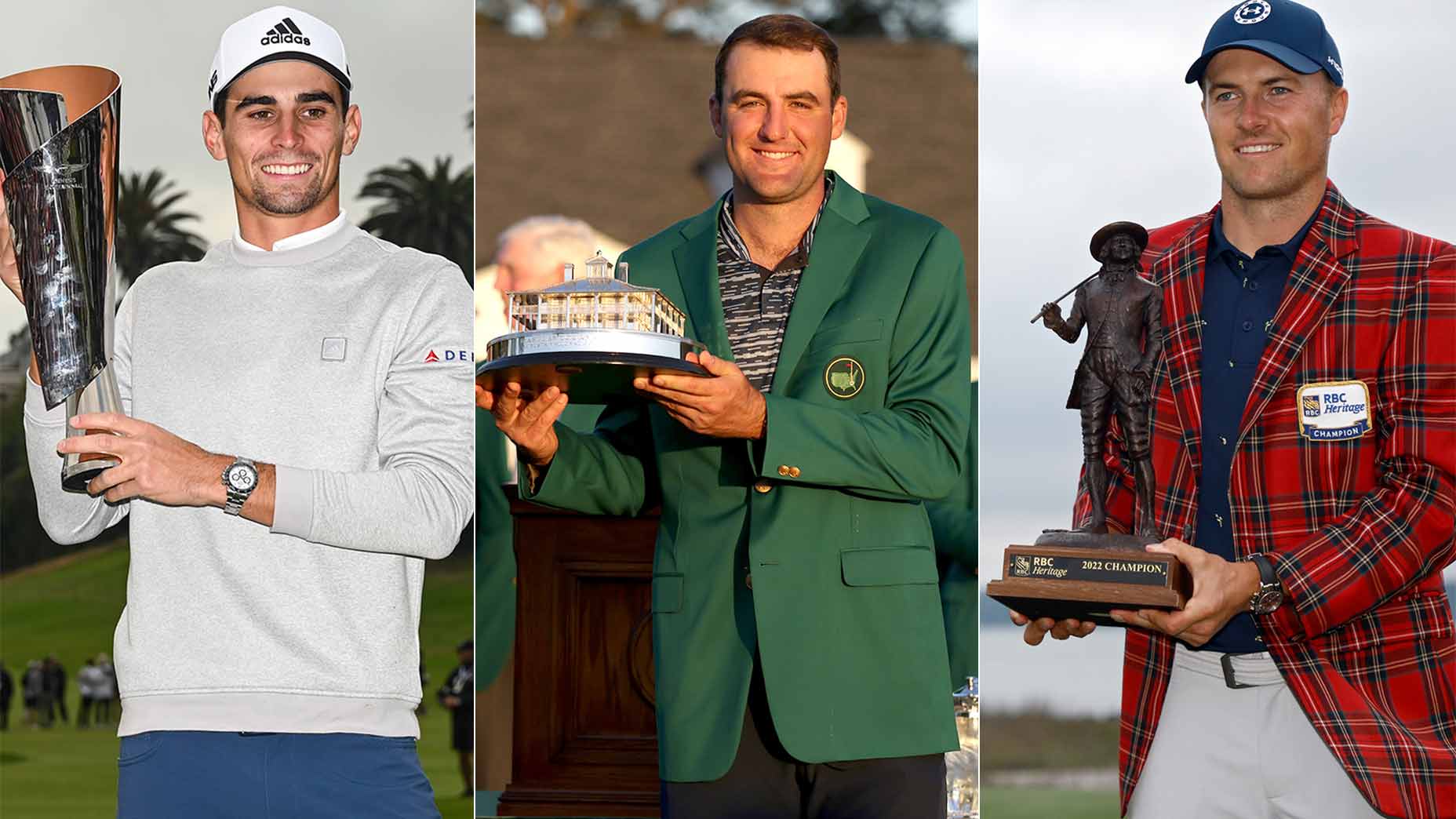
A rendering of the forthcoming DraftKings sportsbook at TPC Scottsdale.
PGA Tour
Has wagering on golf taken off in the four years since a Supreme Court decision helped bring about legalized sports betting in many U.S. states? You bet your Nassau it has.
The amount of money wagered with PGA Tour official betting operators — aka “the handle” — rose almost 50 percent from 2020 to ’21, and total bets increased almost 40 percent. Further growth is pretty much a given; among the more interesting questions is what kind of golf betting the future might bring, and what role it will play in the Tour’s business more generally. To find out, we spoke to Scott Warfield, the Tour’s vice president of gaming.
GOLF: The PGA Tour is bullish on in-play betting — wagers made during an event, not before. Why?
Scott Warfield: Who’s going to shoot the lowest round? This player versus that player. You get your bet in Monday, Tuesday, Wednesday; you come back on Sunday to see if you won. It’s very stale, very stagnant.
Where we’re moving is focusing more on the live. There’s three holes left, and a threesome is coming through. Who’s going to have the low score on this hole? Jon Rahm has 250 yards to the pin from the fairway on a par-5. Here are the odds he can get it inside 20 feet, 10 feet, five feet.
In more mature markets, like Europe, where they’ve had legalized sports betting for decades instead of years, in-play betting represents somewhere in the 70-80 percent range of all bets. They’re less likely to bet on things like over-under, or a money line, or a spread. They bet more on the next tennis point, or who’s going to have the next foul or score the next basketball point. It’s much more microtransactions.
In the U.S., that in-play number is about 30 percent — growing, but significantly smaller. It’s been an illegal territory, and the easiest thing to bet on with a friend or a bookie or whatnot is that money line or spread or who’s going to win the game. Over the next three, five, seven years, we see that in-game number continuing to increase to 50, 60, 70 percent. If the American bettor follows that trajectory, it’s my belief there are two sports that stand the best chance to capitalize — baseball and golf.
GOLF: Why those two?
SW: Because of the amount of content and the pace of play, which is leisurely enough to work perfectly with in-play betting. With IMG Arena, our exclusive data provider in the space, we’re able to offer different opportunities around every hole, every player, every shot. Because of our investment in ShotLink data and, again, the pace of play, it sets itself up great for the growth of in-play betting here in the States.
GOLF: Explain the role of IMG Arena in in-play betting.
SW: You really can’t do in-play betting in golf without the official league data. And if you want that data, i.e. ShotLink, that’s where the IMG Arena’s Golf Event Centre product comes in. Consider “squatters” — people who come in and can watch an event and basically price and model different bet types without official league data. It’s nearly impossible in golf, right? To know whether the shot is at 12’9″, or is that 9’11”? Unless you have the Golf Event Centre.

A ShotLink tablet in action on the PGA Tour.
GOLF: The Tour has five official betting operators. What’s their role, beyond just taking bets?
SW: FanDuel, DraftKings, BetMGM, PointsBet, Parx — those operators are the mouthpiece to sports fans, to sports bettors. Having partnerships with these market leaders helps because since they’re in business with us, they’re helping promote our events.
On days when there’s an NFL game on, you’re still getting promotion of PGA Tour events. Or in the spring when the Tour is up against NBA playoff games, they’re still promoting the Tour and talking about it.
We’re trying almost to create a market. Traditionally, this has just been “try and predict the outright winner of a golf tournament.” We want to get to a place where it’s much more in-play and live and microtransactions. Part of that evolution is educating sports fans — that if you didn’t bet on the outright winner by Thursday morning, it’s OK. That market remains open, and it moves throughout the event as players bogey or par or birdie. It’s education and entertainment — and that’s where the operators play a disproportionately important role for us, because they’re doing a lot of that work.
GOLF: What’s the story with the upcoming sports book project at TPC Scottsdale?
SW: DraftKings is operating in the state of Arizona as our designee, and they’re building a retail sportsbook at TPC Scottsdale that will be one of the best sportsbooks in the world, a global destination for golf fans. I’ve shown it to a few of my golf buddies. Kiawah, Pinehurst and Bandon Dunes will still be in the rotation for our annual golf trips — but now you’ll have a chance to go to TPC Scottsdale, play 36 holes of golf, sit in a world-class DraftKings sportsbook and watch your favorite events. It’ll be a big one for us in the fall of ’23.
GOLF: Beyond the financial considerations, why is it so important?
SW: The WM Phoenix Open is our largest crowd, and it’s a very young crowd. The scene is a scene. Given the brand of that event, having a sportsbook there just adds to the allure of one of the year’s most popular tournaments.
On top of that, the other 51 weeks a year have us really excited. Again, you’re going to be able to play a couple world-class courses — and drive your cart over in between those two courses to an open-air sportsbook with fire pits. It’s going to be a unique thing.
We get asked a lot if this is something we’ll see a lot of, and the answer’s no. It has to be the right course, the right tournament, and the right brand fit. This checked all those boxes for us. I won’t say there won’t be another one, but this will be unique. I think for DraftKings it will be almost a West Coast headquarters. That’s how they’re thinking about the uniqueness of this facility.
GOLF: How would you sum up the PGA Tour’s relationship with sports betting — where it is, where it’s heading?
SW: For us, this whole space for us is about engagement. The Supreme Court made a decision in 2018 that allowed the states to regulate sports betting, if they so choose. We’ve been trying to operate within that framework, continue to maintain and ensure absolute integrity with our product, and leverage the opportunity to engage the core fans and grow our audience.
Yes, there will be commercial benefit to all the stakeholders in all the sports. But first and foremost, we look at it as a way in this fragmented media landscape to get a fan to watch an extra three holes each weekend or attend two more events every year, to get a 25-year-old who’s never thought about PGA Tour golf and viewing it or attending it as something they should consider.
There’s not a lot of new ways into sports fandom. Social media, e-sports, sports betting, the metaverse. Those are all areas where we can engage that key 21- to 35-year-old fanbase and do it responsibly and appropriately. For us, it’s continuing to find those partners who do it the right way, and creatively — and look at what this might look like 7-10 years from now, not necessarily what it looks like today.










